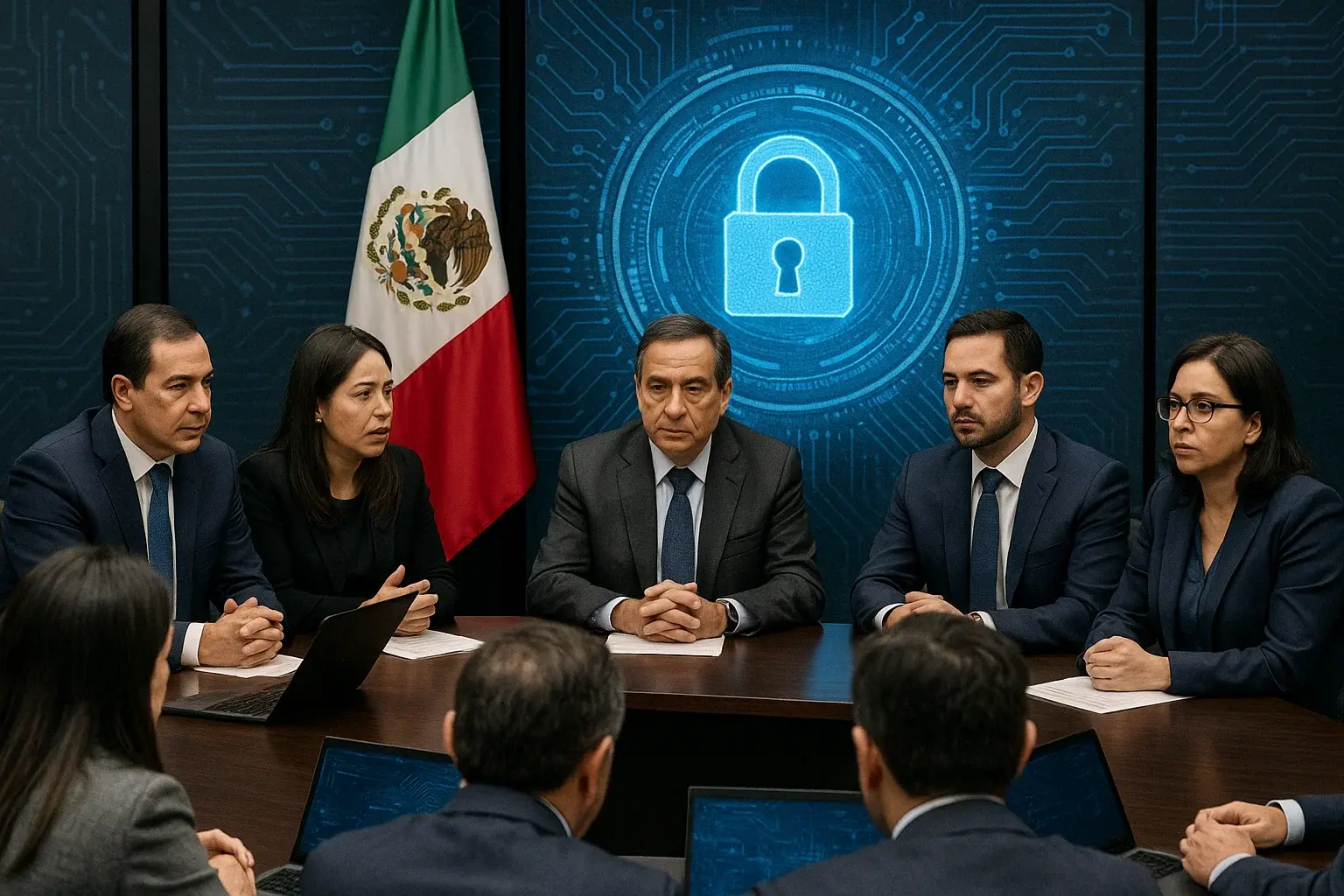Mexico is at a decisive moment. On October 21, a proposal was introduced in the Senate to create a Standing Cybersecurity Commission—an initiative that could shape the country's future in digital protection. This new commission, active during the LXVI Legislature, aims to analyze, regulate, and monitor matters related to national cybersecurity, digital environment protection, and the prevention of cybercrime.
Its creation aligns with Mexico's 2024–2030 National Public Security Strategy and could transform the country’s fragmented digital policies into a coordinated and robust system.
A Crucial Step Toward Digital Defense
Until now, Mexico has relied on a patchwork of partial and disconnected laws—like the Federal Penal Code, the Federal Law on Protection of Personal Data, and the Telecommunications Law—that address cybersecurity without a unified vision.
The proposed commission seeks to establish a coherent legal framework capable of tackling modern threats like ransomware, critical infrastructure attacks, and data manipulation.
It would also build upon two recent developments:
- The enforcement of the Federal Law on Protection of Personal Data Held by Private Parties.
- The proposal to create a National Cybersecurity Agency, still in the planning stages.
Both efforts aim to bolster Mexico's digital sovereignty and human rights protections in the tech space. However, without a legislative body to supervise and coordinate execution, these measures may fall short.
Read more: Ransomware in Mexico: Cyberattacks Cause Major IT Sector Losses
Lessons from Abroad
Mexico may be starting late, but it can draw inspiration from proven international models:
European Union – NIS2 Directive
In force since 2024, NIS2 mandates 24-hour incident reporting, steep fines, and regular audits. It connects governments, businesses, and CSIRTs into a unified cybersecurity response network. Unlike Mexico, where enforcement is inconsistent and protocols are lacking, the EU has built a framework that balances regulation, innovation, and privacy.
United States – Public-Private Collaboration
The Cybersecurity Information Sharing Act (CISA) and NIST frameworks promote cooperation between government and private entities. Their “Identify–Protect–Detect–Respond–Recover” approach helps minimize the impact of attacks in critical sectors. Mexico could benefit from adopting a similar partnership-driven strategy.
China – Centralized Control
China's 2017 Cybersecurity Law emphasizes state control, requiring data localization and real-time monitoring. While it ensures digital sovereignty, it sacrifices privacy—something Mexico aims to preserve with a more democratic, rights-based approach.
Singapore & Australia – Operational Maturity
Singapore’s 2018 Cybersecurity Act and OT Cybersecurity Masterplan 2024 enforce mandatory audits and full supply chain protection. Australia’s SOCI Law compels public and private entities to report incidents and submit to periodic reviews. Both cases show that cyber maturity requires not just laws, but strong execution, oversight, and coordination—critical elements Mexico must prioritize.
Political and Technical Hurdles
The commission is a promising initiative, but faces several obstacles:
Political gridlock is the biggest threat. Partisan divisions between Morena, PAN, and PRI could delay or block comprehensive legislation—leaving citizens vulnerable.
Other key challenges include:
- Talent shortages: 86% of Mexican organizations struggle to find cybersecurity professionals.
- Limited budgets: Underfunding hinders technical capacity building.
- Legal fragmentation: Gaps between existing criminal codes and emerging tech laws create vulnerabilities.
- Evolving threats: AI-driven social engineering accounts for 42% of recent attacks and outpaces current legal responses.
At TecnetOne, we’ve seen how these factors create fertile ground for cybercrime—especially when institutional coordination is weak or reactive.
What Lawmakers Must Do Now
If the Senate is serious about national cybersecurity, it must:
- Approve the commission with bipartisan support. Cooperation must trump political paralysis.
- Set clear operational mandates. The commission needs defined roles, KPIs, and follow-up powers.
- Pass a comprehensive cybersecurity law aligned with global standards like NIS2 or SOCI.
- Allocate sufficient funding to train specialists and support detection and response programs.
- Invest in workforce development. With 96% of organizations planning digital upgrades, human capital is vital.
- Hold public-private hearings. Tech firms, universities, and cyber defense orgs should help shape policy.
- Build international partnerships for threat intelligence and best practice exchange.
Failure to act risks turning Mexico into a digitally dependent, highly exposed nation unable to withstand modern cyberattacks.
You might also be interested in: Mexican Water Infrastructure Under Fire: Rising Cyberattacks
A Path Forward: Toward Cyber Resilience and Sovereignty
Mexico has the chance to make a historic leap. If this commission lays the groundwork for transparent, cooperative cybersecurity governance, the country could reach a level of cyber resilience on par with advanced economies.
Key steps:
- Embrace proven global models like NIS2 and SOCI.
- Foster collaboration across government, academia, and industry.
- Close skill gaps and equip institutions with advanced detection tools.
At TecnetOne, we believe cybersecurity is a strategic investment, not a cost. Protecting digital infrastructure is key to economic growth, sovereignty, and public trust.
Final Thoughts
The proposed Cybersecurity Commission is more than a legislative formality—it’s a matter of national security.
Mexico now faces a choice: continue reacting to cyber threats or build a forward-looking, coordinated digital defense policy. If lawmakers reach consensus, the country could finally escape its vulnerability and move toward a more secure future—where technology and protection go hand in hand.

